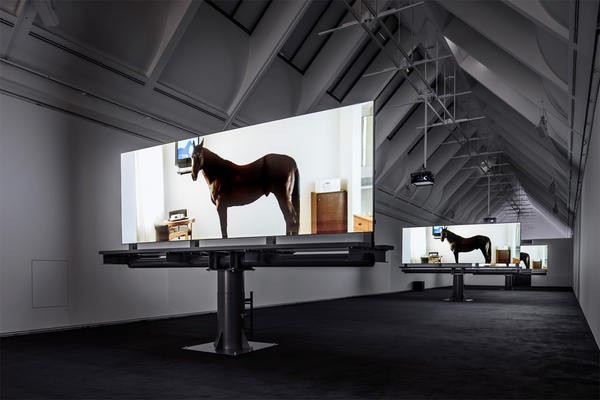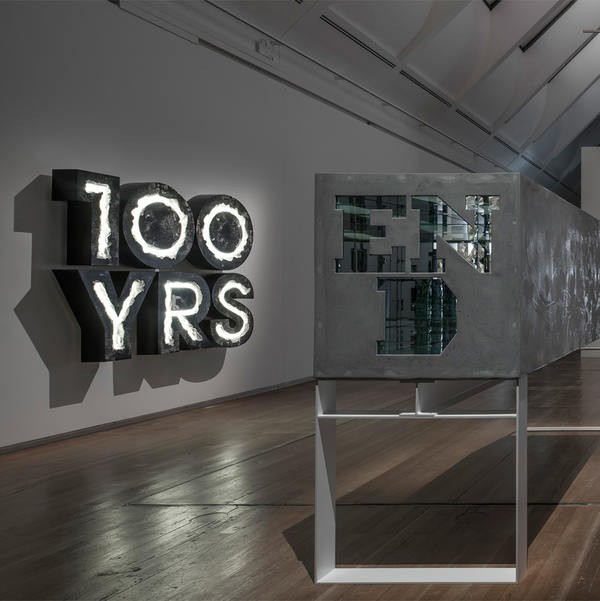Doug Aitken
09 Jul - 27 Sep 2015
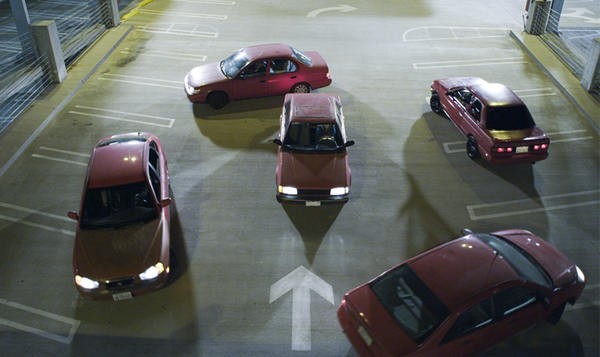
DOUG AITKEN, SONG 1, 2012/2015 COURTESY THE ARTIST; 303 GALLERY, NEW YORK; GALERIE EVA PRESENHUBER, ZURICH; VICTORIA MIRO GALLERY, LONDON; REGEN PROJECTS, LOS ANGELES FILM STILL © DOUG AITKEN
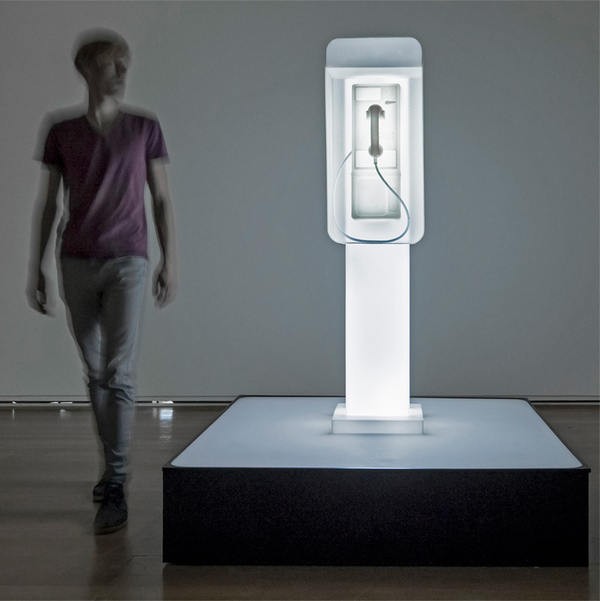
DOUG AITKEN, EXHIBITION VIEW OF TWILIGHT, 2014 © SCHIRN KUNSTHALLE FRANKFURT, 2015; PHOTO: NORBERT MIGULETZ
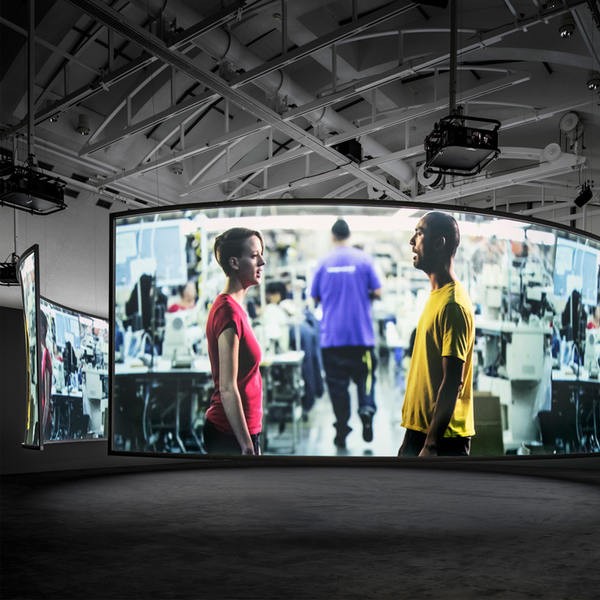
DOUG AITKEN, EXHIBITION VIEW OF SONG 1, 2012/2015 © SCHIRN KUNSTHALLE FRANKFURT, 2015; PHOTO: NORBERT MIGULETZ
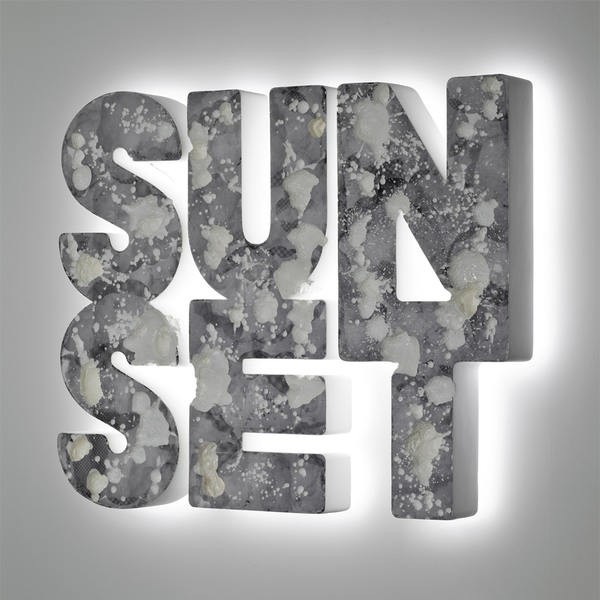
DOUG AITKEN, SUNSET (BLACK AND WHITE), 2011 COURTESY THE ARTIST; 303 GALLERY, NEW YORK; GALERIE EVA PRESENHUBER, ZURICH; VICTORIA MIRO GALLERY, LONDON; REGEN PROJECTS, LOS ANGELES FOTO © BRIAN FORREST
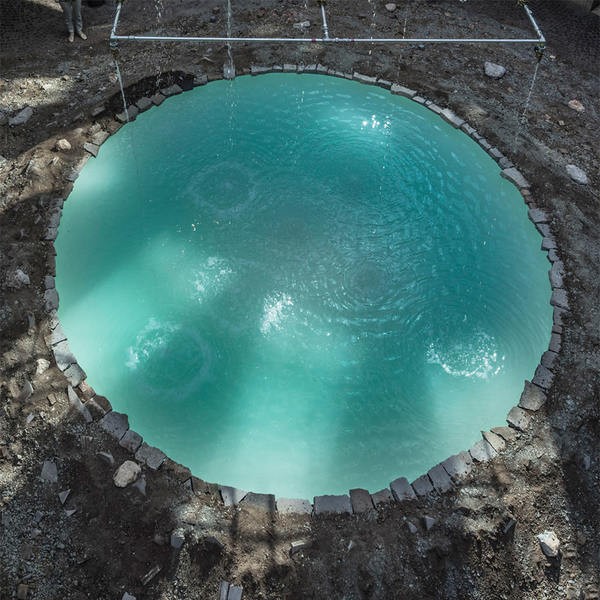
DOUG AITKEN, SONIC FOUNTAIN II, 2013/2015, INSTALLATION IN THE SCHIRN ROTUNDA © SCHIRN KUNSTHALLE FRANKFURT, 2015; PHOTO: NORBERT MIGULETZ
DOUG AITKEN
9 July – 27 September 2015
Curated by: Matthias Ulrich
From July 9, 2015, Schirn Kunsthalle Frankfurt dedicates its entire exhibition space, inside and out, to the impressive work of American multimedia-artist Doug Aitken. It is not only the most comprehensive solo presentation of Aitken's work in Germany and beyond, but also an exhibition transcending spatial boundaries: The Schirn will present Aitken's kaleidoscopic universe as a survey of the major stages in more than 1400 square meters of exhibition space. “SONG 1” (2012/2015), “Black Mirror” (2011), “migration (empire)” (2008) and “diamond sea” (1997) will be shown in atmospheric spaces with corresponding sculptures, such as “Sunset (black and white)” (2011) and “Listening” (2011). “Sonic Fountain II” (2013/2015) will transform the public and freely accessible Rotunda of the Schirn into an acoustic-spherical space. Born in 1968 in Redondo Beach, California, Aitken transcends boundaries with his award-winning work. He combines film and music, architecture, performance and sculpture in a dynamic way. For more than 20 years, he has been creating works of art of fascinating audiovisual intensity and suggestive-seductive power. Aitken belongs to a generation of artists who have reassessed and decisively influenced the way we look at art: His works bear witness to a more profound observation of reality and reflect a philosophical analysis of the present world. He takes the viewers of his work on a synesthetic journey around the world and to their inner self – in a maelstrom of expressive and rhythmically structured images. He poses existential questions, but does not provide easy answers. Instead, the artist expresses an almost ingenious enthusiasm for humanity and communal interaction. His themes continuously revolve around human civilization: the alienation of the individual and isolation in the mass; man's relationship with nature and technology; and technology’s coexistence with nature as well as human relationships per se.
In his projects, Aitken has re-formulated the exhibition model to worldwide attention. Be it with the presentation of his work on the exterior facades of museums, including “sleepwalkers” at the Museum of Modern Art (MoMA) in New York, or the staging of unparalleled happenings, such as “Station to Station”, a 4,000 mile train journey from New York to San Francisco. Aitken continues his concept of spatially boundless exhibiting in Frankfurt. He goes beyond the walls of the Schirn and into the public realm. Thus, variations of his work “migration (empire)” (2008) can be viewed at Frankfurt Airport, in hotels and across large City-Light-Boards at various locations around the city.
The exhibition “Doug Aitken” is supported by the Gemeinnützige Kulturfonds Frankfurt RheinMain as part of its new temporary focus theme “Transit” (2015–2017).
“For more than two decades, the works by American artist Doug Aitken have expanded our possibilities of perception. For Schirn Kunsthalle Frankfurt, Doug Aitken, for the first time, casts a retrospective look at his influential oeuvre, resulting in a parcours that renders the architecture of the building invisible while connecting the different works to form a coherent spatial unit”, says Max Hollein, Director of Schirn Kunsthalle.
Curator Matthias Ulrich about the artist: “In addition to overcoming spatial boundaries, movement and velocity form two main motifs that Doug Aitken time and again takes up in his elaborate, thoughtful and perfect work. He explores our global and steadily accelerated present. His works challenge our immediate experience, which begins with sensual perception and ends in activity. We never find ourselves in front of Doug Aitken’s works, but rather, within them.”
The exhibition journey starts in the exterior space. In the Schirn-Rotunda, there is Sonic Fountain II, a site-specific extended version of the work from 2013. It marks the beginning of the exhibition, and, at the same time, provides its soundtrack. Water drips and spurts into a basin formed from sand and gravel, filled with milky liquid. It is a musical composition of liquid noises that is compacted acoustically by the vessel-shaped architecture of the Rotunda. The presentation of “Sonic Fountain II” is sponsored by the members of the board of trustees, and the management board of the Verein der Freunde der Schirn Kunsthalle e. V.
The first work in the interior of the Schirn is the multi-channel video installation SONG 1 from 2012/2015. Originally developed for the facade of the Hirshhorn Museum and Sculpture Garden in Washington DC, the work will be projected for the first time in an interior space onto either side of cylindrical screens suspended from the ceiling. “SONG 1” looks at the hustle and bustle of a US city at night. Images of ordinary daily life consisting of work, endless road trips and looking for human contact, connection and intimacy are revealed at different locations, such as a factory, a fast food restaurant and a parking lot. The musical theme for the film is the song “I Only Have Eyes For You” (1934, Dames). Aitken gets various protagonists, including Tilda Swinton and Beck to sing the song in myriad interpretations, and thus determine the rhythm and atmosphere of the individual images.
In the second major video installation, Black Mirror from 2011, Aitken explores the nomadic journeys of a young woman who is trapped in a cycle of accomplishments and realities of modern civilization – airport, hotel, Internet, highway, smartphone, pills. Aitken does not reveal where she comes from, who she is, nor why she travels. Rounded up yet driven, in a continuous present, the young woman, played by American actress Chloë Sevigny, is constantly moving from place to place, for her own sake. It frequently appears to her as if she looked at herself from the outside, and the places and landscapes pass her by like a movie. Movement – impressively reproduced by Aitken’s camera – is the actual subject of the journey and its sole objective.
Aitken continues to expand on the theme of movement in the subsequent work migration (empire) from 2008. He describes the situation of being everywhere, yet ultimately nowhere, by relocating the action to motel rooms outside the metropolises. At Schirn, the work is presented on three large billboard screens, mounted one after another. This form of presentation is reminiscent of a row of billboards along a road. Aitken’s camera gradually leads the viewer into individual rooms where animals appear: a horse stands on a threadbare carpet, its hoofs kick up dust; a beaver bathes in a tub, rabbits loll on beds. There is no discernible narrative action, Aitken rather focuses on seeing as such, and the thought patterns that limit and curtail visual discovery.
The exhibition ends with a pivotal work in the artist's oeuvre, diamond sea from 1997 – his first multi-channel video installation and among his first architectural work. For the landscape panorama, Aitken spent months in the Namib Desert in the southwest of Africa. He relates the once highly secure and now decaying facilities of the diamond mines with the rather distinctive natural environment. As Aitken himself says, he presents a “quiet, almost hallucinatory phantom world”. The images of the barren and inhospitable site impact on poetic images of the desert and the sea. In “diamond sea", the artist deliberately backs out from the role of the author to give room to the reception, the physical and spiritual experience, of the work.
Beside the four large video installations, there is a concise selection of sculptures by the Californian artist, such as “Speed”, 2012 and “1968 (broken)” from 2011. Made from various materials, they are reminiscent of luminous advertising signs, loud and aggressive contemporary urban signs. Aitken's sculptures relate to the themes of his film work, and emphasize the interactive nature of his installations.
Doug Aitken (*1968, Redondo Beach, California) studied from 1987–1991 at the Art Center College of Design, Pasadena, where he received his BFA degree, as well as from 1986–1987 at Marymount College, Palos Verdes in California. Aitken works cross-genre with various artists, actors and musicians. His artistic work includes film, music, architecture, performance and happening, as well as sculpture. Aitken has received numerous awards. In 1999, he was awarded the International Prize, the Golden Lion at the Venice Biennale. Works by Doug Aitken have been presented in many solo and group exhibitions worldwide. He exhibited at the Hirshhorn Museum and Sculpture Garden in Washington DC (2012), MoMA in New York (2007), Kunsthalle Zurich (2003), KunstWerke Berlin (2001), the Serpentine Gallery in London (2001), and at the Vienna Secession (2000). Aitken has participated in numerous biennials, such as at Tate Liverpool (2012), the Whitney Biennial (2000), the Sydney Biennale (2000) and the Biennale di Venezia (1999). He took part in major group exhibitions including at the Stedelijk Museum in Amsterdam (2007), at Schirn Kunsthalle Frankfurt (2004) and at Centre Pompidou in Paris 2002. He produced happenings and performances at MOCA in LA (2010), and during the Athens Theater Festival (2011). Parallel to the major solo exhibition at the Schirn, the Barbican Centre in London presents the exhibition “Station to Station: A 30 day Happening” (June 27–July 26, 2015).
9 July – 27 September 2015
Curated by: Matthias Ulrich
From July 9, 2015, Schirn Kunsthalle Frankfurt dedicates its entire exhibition space, inside and out, to the impressive work of American multimedia-artist Doug Aitken. It is not only the most comprehensive solo presentation of Aitken's work in Germany and beyond, but also an exhibition transcending spatial boundaries: The Schirn will present Aitken's kaleidoscopic universe as a survey of the major stages in more than 1400 square meters of exhibition space. “SONG 1” (2012/2015), “Black Mirror” (2011), “migration (empire)” (2008) and “diamond sea” (1997) will be shown in atmospheric spaces with corresponding sculptures, such as “Sunset (black and white)” (2011) and “Listening” (2011). “Sonic Fountain II” (2013/2015) will transform the public and freely accessible Rotunda of the Schirn into an acoustic-spherical space. Born in 1968 in Redondo Beach, California, Aitken transcends boundaries with his award-winning work. He combines film and music, architecture, performance and sculpture in a dynamic way. For more than 20 years, he has been creating works of art of fascinating audiovisual intensity and suggestive-seductive power. Aitken belongs to a generation of artists who have reassessed and decisively influenced the way we look at art: His works bear witness to a more profound observation of reality and reflect a philosophical analysis of the present world. He takes the viewers of his work on a synesthetic journey around the world and to their inner self – in a maelstrom of expressive and rhythmically structured images. He poses existential questions, but does not provide easy answers. Instead, the artist expresses an almost ingenious enthusiasm for humanity and communal interaction. His themes continuously revolve around human civilization: the alienation of the individual and isolation in the mass; man's relationship with nature and technology; and technology’s coexistence with nature as well as human relationships per se.
In his projects, Aitken has re-formulated the exhibition model to worldwide attention. Be it with the presentation of his work on the exterior facades of museums, including “sleepwalkers” at the Museum of Modern Art (MoMA) in New York, or the staging of unparalleled happenings, such as “Station to Station”, a 4,000 mile train journey from New York to San Francisco. Aitken continues his concept of spatially boundless exhibiting in Frankfurt. He goes beyond the walls of the Schirn and into the public realm. Thus, variations of his work “migration (empire)” (2008) can be viewed at Frankfurt Airport, in hotels and across large City-Light-Boards at various locations around the city.
The exhibition “Doug Aitken” is supported by the Gemeinnützige Kulturfonds Frankfurt RheinMain as part of its new temporary focus theme “Transit” (2015–2017).
“For more than two decades, the works by American artist Doug Aitken have expanded our possibilities of perception. For Schirn Kunsthalle Frankfurt, Doug Aitken, for the first time, casts a retrospective look at his influential oeuvre, resulting in a parcours that renders the architecture of the building invisible while connecting the different works to form a coherent spatial unit”, says Max Hollein, Director of Schirn Kunsthalle.
Curator Matthias Ulrich about the artist: “In addition to overcoming spatial boundaries, movement and velocity form two main motifs that Doug Aitken time and again takes up in his elaborate, thoughtful and perfect work. He explores our global and steadily accelerated present. His works challenge our immediate experience, which begins with sensual perception and ends in activity. We never find ourselves in front of Doug Aitken’s works, but rather, within them.”
The exhibition journey starts in the exterior space. In the Schirn-Rotunda, there is Sonic Fountain II, a site-specific extended version of the work from 2013. It marks the beginning of the exhibition, and, at the same time, provides its soundtrack. Water drips and spurts into a basin formed from sand and gravel, filled with milky liquid. It is a musical composition of liquid noises that is compacted acoustically by the vessel-shaped architecture of the Rotunda. The presentation of “Sonic Fountain II” is sponsored by the members of the board of trustees, and the management board of the Verein der Freunde der Schirn Kunsthalle e. V.
The first work in the interior of the Schirn is the multi-channel video installation SONG 1 from 2012/2015. Originally developed for the facade of the Hirshhorn Museum and Sculpture Garden in Washington DC, the work will be projected for the first time in an interior space onto either side of cylindrical screens suspended from the ceiling. “SONG 1” looks at the hustle and bustle of a US city at night. Images of ordinary daily life consisting of work, endless road trips and looking for human contact, connection and intimacy are revealed at different locations, such as a factory, a fast food restaurant and a parking lot. The musical theme for the film is the song “I Only Have Eyes For You” (1934, Dames). Aitken gets various protagonists, including Tilda Swinton and Beck to sing the song in myriad interpretations, and thus determine the rhythm and atmosphere of the individual images.
In the second major video installation, Black Mirror from 2011, Aitken explores the nomadic journeys of a young woman who is trapped in a cycle of accomplishments and realities of modern civilization – airport, hotel, Internet, highway, smartphone, pills. Aitken does not reveal where she comes from, who she is, nor why she travels. Rounded up yet driven, in a continuous present, the young woman, played by American actress Chloë Sevigny, is constantly moving from place to place, for her own sake. It frequently appears to her as if she looked at herself from the outside, and the places and landscapes pass her by like a movie. Movement – impressively reproduced by Aitken’s camera – is the actual subject of the journey and its sole objective.
Aitken continues to expand on the theme of movement in the subsequent work migration (empire) from 2008. He describes the situation of being everywhere, yet ultimately nowhere, by relocating the action to motel rooms outside the metropolises. At Schirn, the work is presented on three large billboard screens, mounted one after another. This form of presentation is reminiscent of a row of billboards along a road. Aitken’s camera gradually leads the viewer into individual rooms where animals appear: a horse stands on a threadbare carpet, its hoofs kick up dust; a beaver bathes in a tub, rabbits loll on beds. There is no discernible narrative action, Aitken rather focuses on seeing as such, and the thought patterns that limit and curtail visual discovery.
The exhibition ends with a pivotal work in the artist's oeuvre, diamond sea from 1997 – his first multi-channel video installation and among his first architectural work. For the landscape panorama, Aitken spent months in the Namib Desert in the southwest of Africa. He relates the once highly secure and now decaying facilities of the diamond mines with the rather distinctive natural environment. As Aitken himself says, he presents a “quiet, almost hallucinatory phantom world”. The images of the barren and inhospitable site impact on poetic images of the desert and the sea. In “diamond sea", the artist deliberately backs out from the role of the author to give room to the reception, the physical and spiritual experience, of the work.
Beside the four large video installations, there is a concise selection of sculptures by the Californian artist, such as “Speed”, 2012 and “1968 (broken)” from 2011. Made from various materials, they are reminiscent of luminous advertising signs, loud and aggressive contemporary urban signs. Aitken's sculptures relate to the themes of his film work, and emphasize the interactive nature of his installations.
Doug Aitken (*1968, Redondo Beach, California) studied from 1987–1991 at the Art Center College of Design, Pasadena, where he received his BFA degree, as well as from 1986–1987 at Marymount College, Palos Verdes in California. Aitken works cross-genre with various artists, actors and musicians. His artistic work includes film, music, architecture, performance and happening, as well as sculpture. Aitken has received numerous awards. In 1999, he was awarded the International Prize, the Golden Lion at the Venice Biennale. Works by Doug Aitken have been presented in many solo and group exhibitions worldwide. He exhibited at the Hirshhorn Museum and Sculpture Garden in Washington DC (2012), MoMA in New York (2007), Kunsthalle Zurich (2003), KunstWerke Berlin (2001), the Serpentine Gallery in London (2001), and at the Vienna Secession (2000). Aitken has participated in numerous biennials, such as at Tate Liverpool (2012), the Whitney Biennial (2000), the Sydney Biennale (2000) and the Biennale di Venezia (1999). He took part in major group exhibitions including at the Stedelijk Museum in Amsterdam (2007), at Schirn Kunsthalle Frankfurt (2004) and at Centre Pompidou in Paris 2002. He produced happenings and performances at MOCA in LA (2010), and during the Athens Theater Festival (2011). Parallel to the major solo exhibition at the Schirn, the Barbican Centre in London presents the exhibition “Station to Station: A 30 day Happening” (June 27–July 26, 2015).

